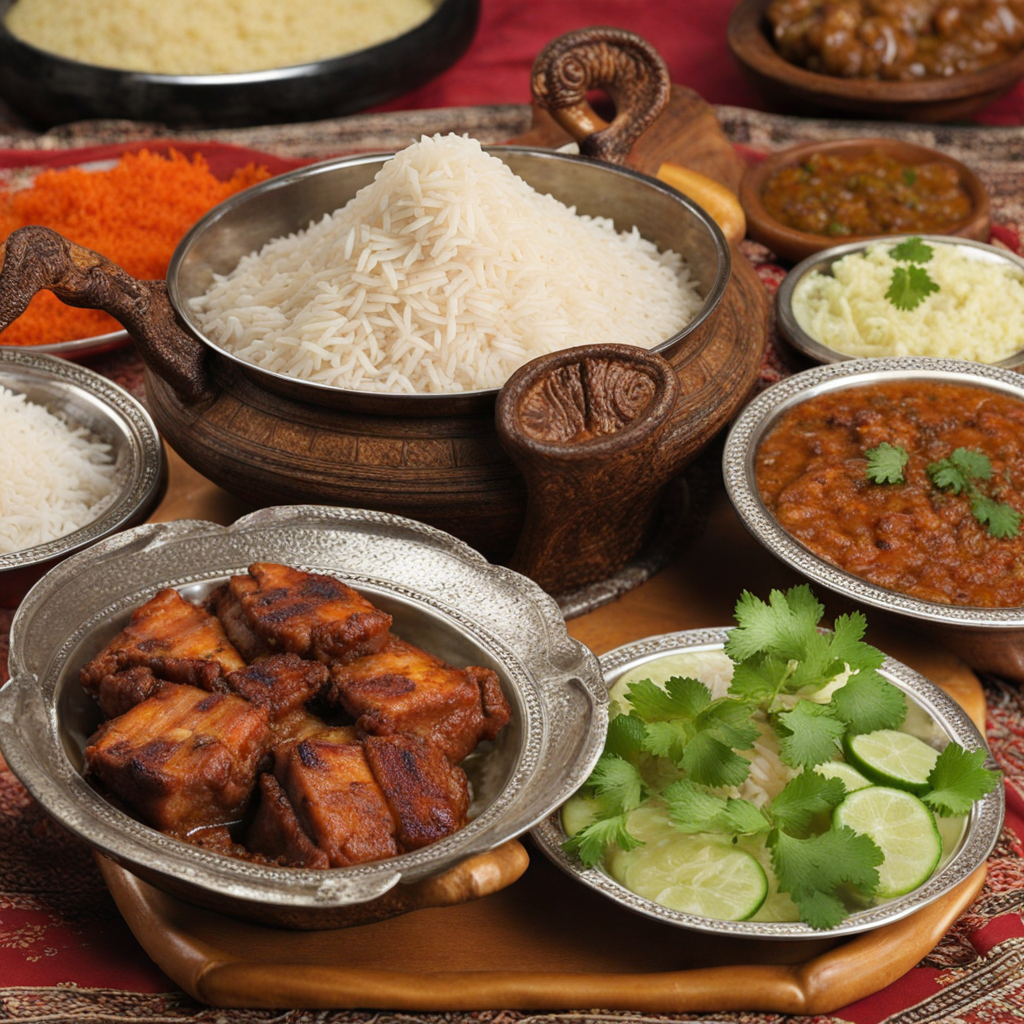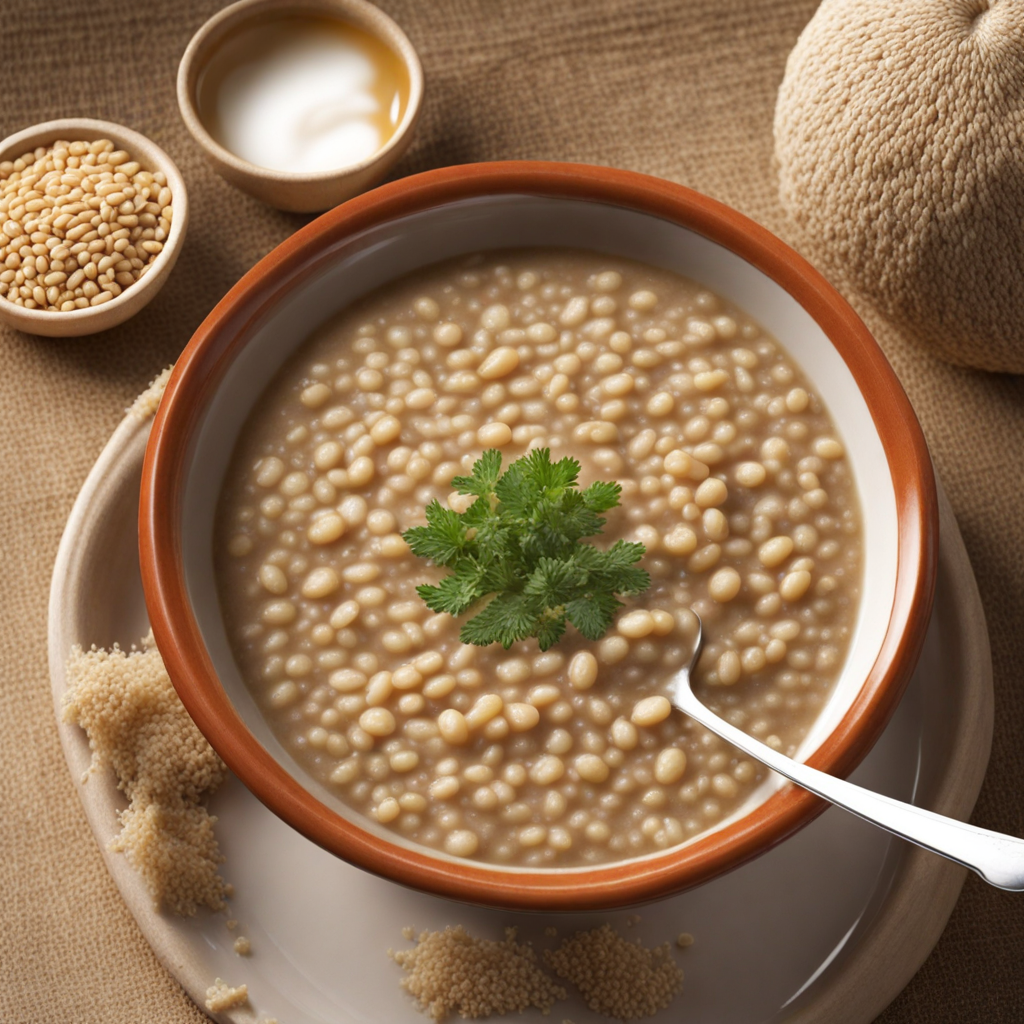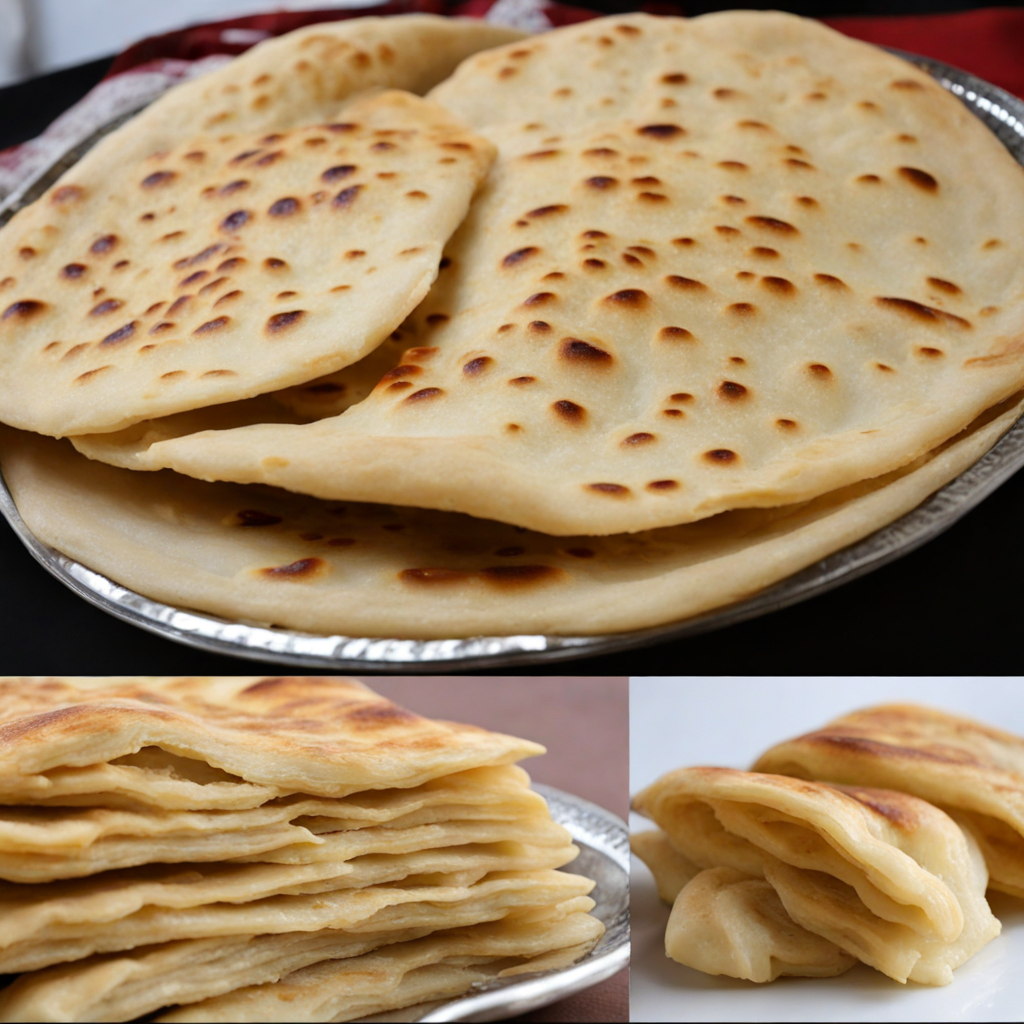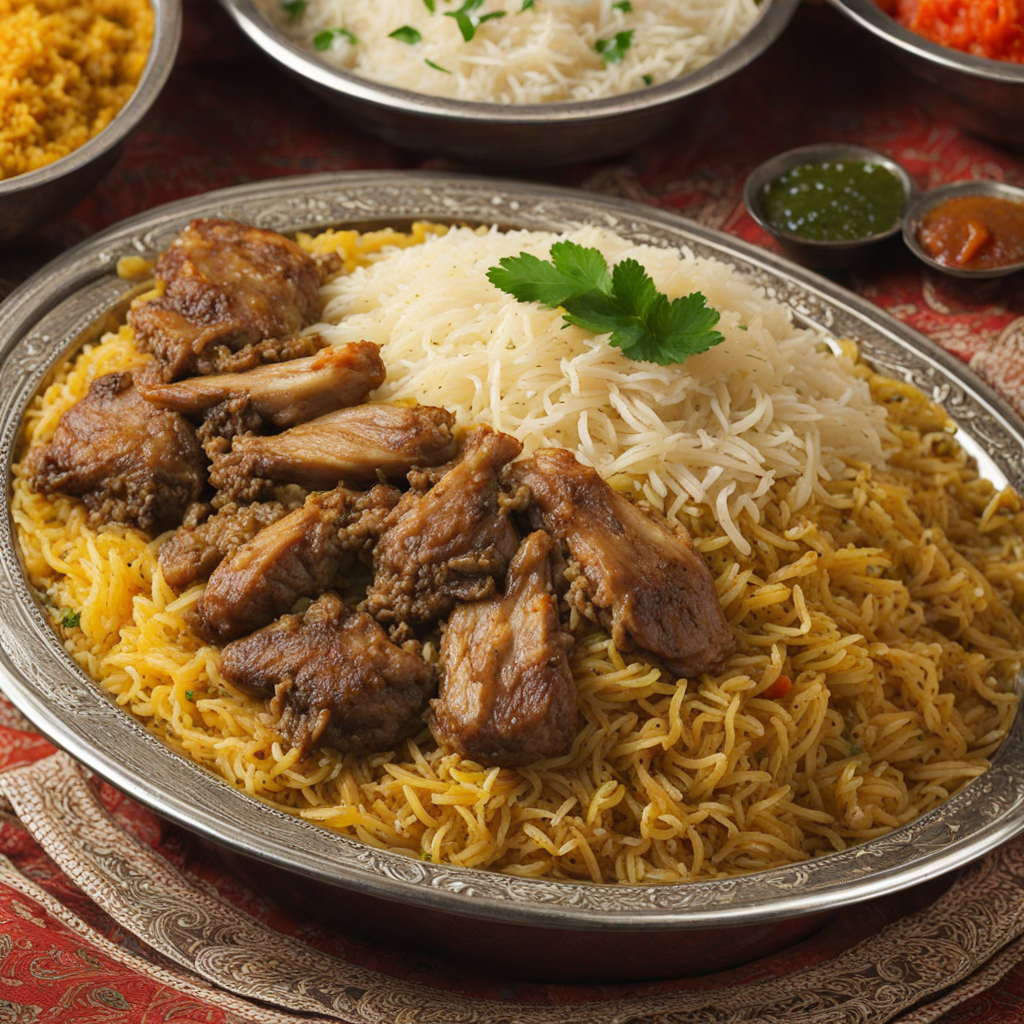Mandi
Mandi is a traditional Yemeni dish that beautifully marries the flavors of rice and meat, usually chicken or lamb, in an aromatic blend that is both comforting and exotic. The dish is characterized by its long-grain basmati rice, which is cooked to fluffy perfection, absorbing the rich spices and juices of the meat. The preparation begins with marinating the meat in a fragrant mixture of spices, including saffron, cumin, and cardamom, which infuse it with depth and warmth. The unique cooking technique involves slow-cooking the meat over a fire, allowing the flavors to meld together in a tantalizing harmony that captures the essence of Yemeni cuisine.
How It Became This Dish
The History of Mandi: A Culinary Gem from Yemen #### Origins of Mandi Mandi, a fragrant and flavorful dish, holds a revered place in Yemeni cuisine. Its origins can be traced back to the mountainous regions of Yemen, particularly in the areas surrounding the capital, Sana'a, and the historic city of Shabwa. The dish combines rice, meat (often lamb or chicken), and a blend of spices, cooked together to create a harmonious symphony of flavors. The word "mandi" is derived from the Arabic term "نَدى" (nada), meaning "dew," which is a fitting description for the dish’s moist and aromatic qualities. The roots of mandi can be linked to the ancient practices of the Bedouin tribes, who roamed the deserts and utilized the resources available to them to create hearty meals. The cooking method, which typically involves slow cooking in an underground oven, or "tandoor," was originally developed for practicality. This method allowed the meat to become tender and imbued with a smoky flavor while cooking alongside rice, which absorbed the juices and spices. This communal style of cooking and eating reflects the Bedouin culture, where sharing food is a gesture of hospitality and kinship. #### Cultural Significance Mandi is more than just a dish; it is a cultural symbol of Yemen's rich heritage and communal values. It is often served during special occasions, such as weddings, religious celebrations, and family gatherings. The preparation and consumption of mandi bring families and friends together, fostering a sense of unity and belonging. Traditionally, it is served on large platters, with diners sitting around the dish, using their hands to scoop the food, a practice that is deeply rooted in Yemeni customs. In a broader context, mandi represents the essence of Yemeni hospitality. When a guest arrives, it is customary to serve them a lavish meal, with mandi at the forefront. The act of sharing food signifies respect and honor, and the dish has become a symbol of Yemeni identity, transcending regional and social boundaries. #### The Evolution of Mandi As Yemen has evolved over the centuries, so too has mandi. The dish has undergone various transformations, influenced by trade, migration, and cultural exchanges. The spice trade routes that passed through Yemen introduced new flavors and ingredients, enriching the mandi recipe. Spices such as saffron, cardamom, and cloves became integral to the dish, elevating its complexity and aromatic profile. During the 15th and 16th centuries, the expansion of the Yemeni coffee trade further solidified the country’s reputation as a culinary hub. The use of spices in both coffee and food became a hallmark of Yemeni gastronomy. Mandi, with its aromatic blend of spices, became synonymous with the culinary sophistication of the region. In the 19th century, with the advent of the British and Ottoman presence in Yemen, new cooking techniques and ingredients began to influence Yemeni cuisine. The introduction of rice from India, particularly the fragrant basmati variety, revolutionized the way mandi was prepared. This rice, known for its long grains and nutty flavor, complemented the richness of the meat, creating a dish that was not only delicious but visually appealing. #### Regional Variations As mandi gained popularity, regional variations began to emerge, each reflecting the local culture and available ingredients. In the highlands, for instance, mandi is often made with lamb, marinated in a rich blend of spices, and cooked with a variety of vegetables. In coastal areas, fish mandi has become a common alternative, showcasing the abundance of seafood along Yemen’s shoreline. Outside of Yemen, the dish has found its way into neighboring countries, particularly in the Gulf states like Saudi Arabia, the UAE, and Oman. Each region has adopted mandi, adding its unique flair. In Saudi Arabia, for instance, the dish is often served with a spicy tomato sauce called "daqqus," and is typically accompanied by a side of yogurt or salad. The Gulf version may also feature a more elaborate presentation, with whole roasted lamb placed atop the rice, serving as a centerpiece for special occasions. #### Mandi in Modern Times In contemporary times, mandi has transcended its traditional roots and gained global recognition. Yemeni diaspora communities have played a crucial role in introducing the dish to international audiences, establishing restaurants that celebrate the culinary heritage of Yemen. As a result, mandi has become a popular dish in many urban centers worldwide, from London to New York, where it is embraced by food enthusiasts eager to explore diverse cuisines. Social media and food blogging have further propelled the popularity of mandi, allowing home cooks to share their own interpretations of the dish. Online recipes and cooking videos showcase the intricate preparation process, from marinating the meat to the careful layering of rice and spices. This digital age has fostered a new appreciation for traditional dishes, encouraging younger generations to engage with their culinary heritage. Moreover, the rise of food tourism has led to a renewed interest in Yemeni cuisine, with travelers seeking authentic experiences. Mandi has become a staple in food tours, inviting visitors to partake in the communal dining experience that defines Yemeni culture. #### Conclusion Mandi is a dish that embodies the rich history and cultural significance of Yemen. From its ancient Bedouin origins to its modern-day global presence, it has evolved while remaining true to its roots. The preparation and consumption of mandi reflect the values of hospitality, community, and tradition, making it a beloved symbol of Yemeni identity. As the world continues to embrace diverse culinary traditions, mandi stands out as a testament to the resilience and richness of Yemeni culture. Whether enjoyed at a family gathering, a festive celebration, or in a bustling restaurant, mandi invites people to come together, share stories, and savor the flavors of Yemen, one plate at a time.
You may like
Discover local flavors from Yemen






